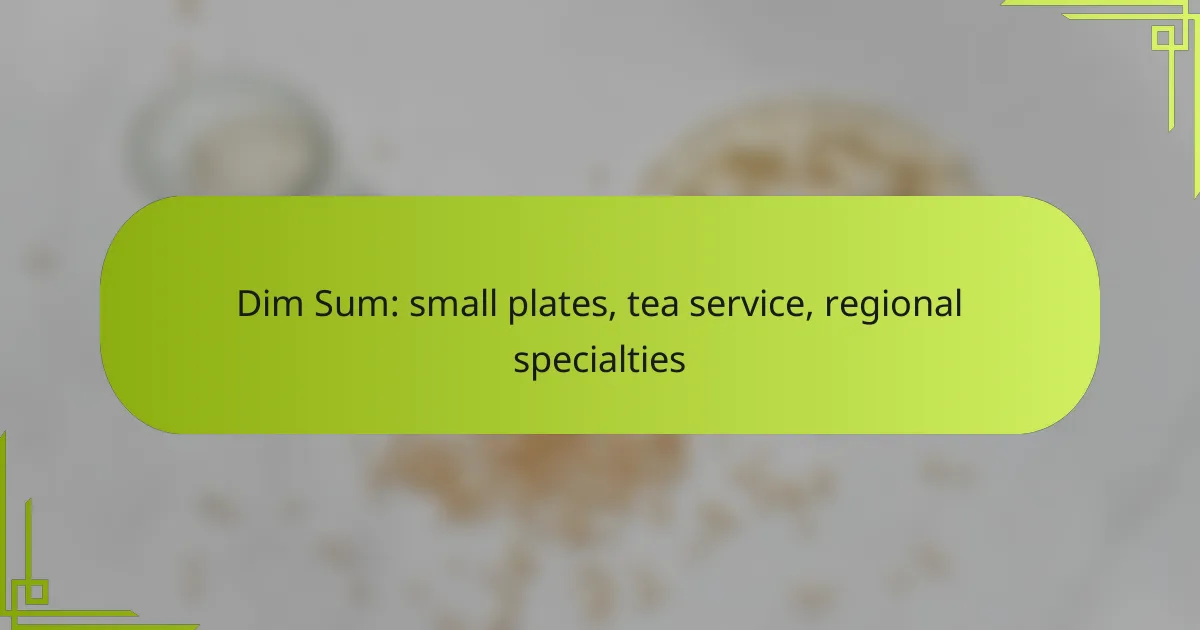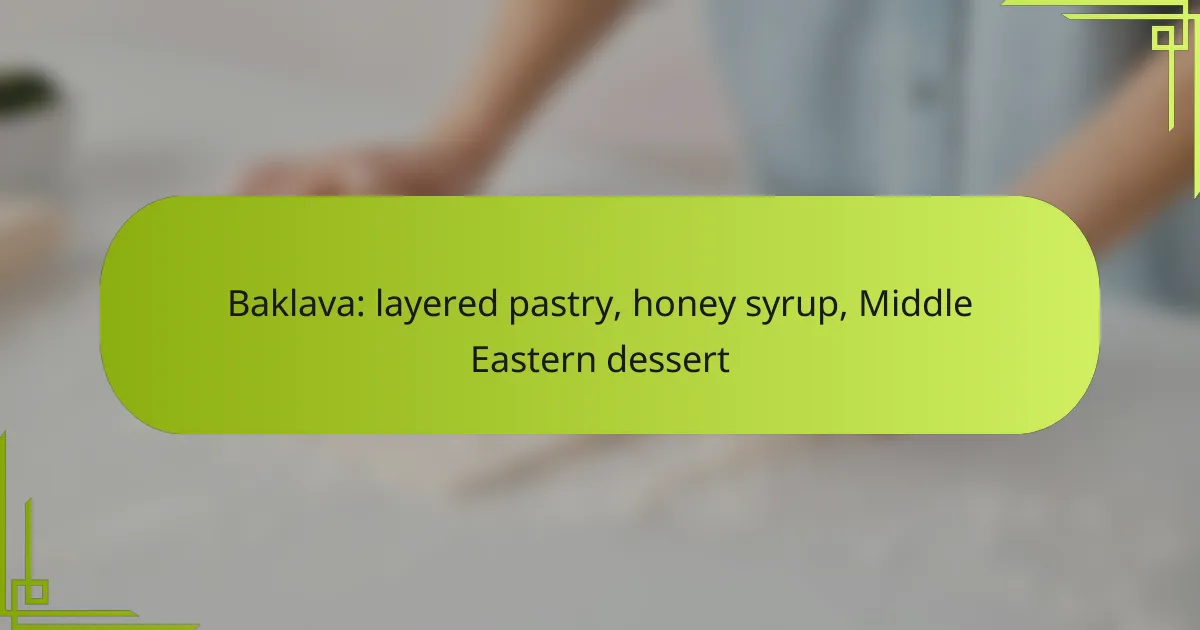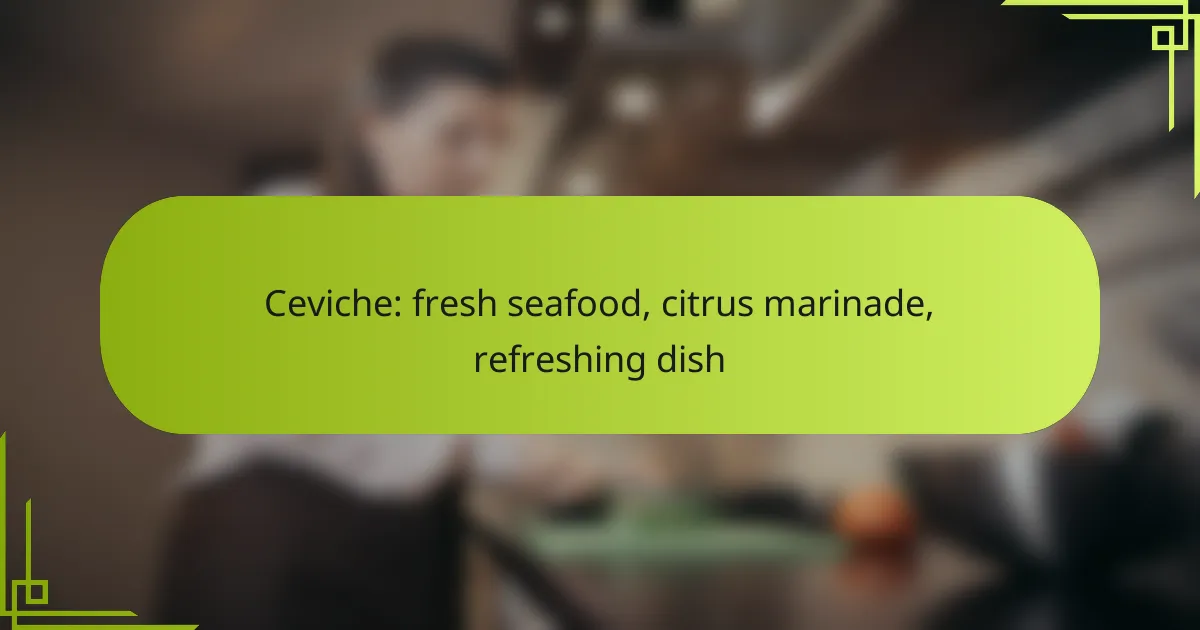Dim sum is a delightful culinary tradition that features an array of small plates, each offering a unique taste experience rooted in regional Chinese specialties. Often enjoyed with a traditional tea service, this dining experience emphasizes the harmonious pairing of flavors and aromas, making it a beloved choice in cities like Toronto, Vancouver, and Calgary. From Har Gow to Egg Tarts, the best dim sum showcases the rich diversity of Chinese cuisine, inviting diners to explore a world of flavors in every bite.
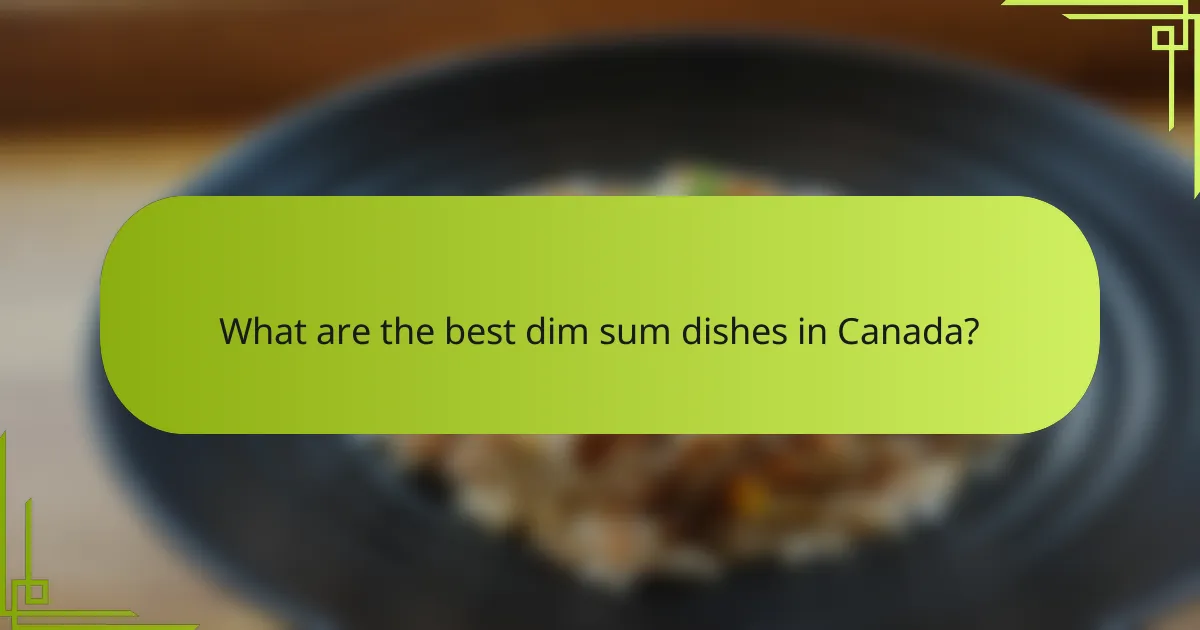
What are the best dim sum dishes in Canada?
The best dim sum dishes in Canada showcase a variety of flavors and textures, reflecting regional Chinese culinary traditions. Popular choices include Har Gow, Siu Mai, Char Siu Bao, Cheung Fun, and Egg Tarts, each offering a unique taste experience that is widely appreciated across the country.
Har Gow (Shrimp Dumplings)
Har Gow, or shrimp dumplings, are a dim sum staple known for their delicate, translucent wrappers and succulent shrimp filling. Typically served in bamboo steamers, these dumplings are often accompanied by soy sauce or chili oil for added flavor.
When enjoying Har Gow, look for a smooth, slightly chewy texture in the wrapper and a generous portion of fresh shrimp inside. They are best consumed hot, right after steaming, to appreciate their full flavor.
Siu Mai (Pork Dumplings)
Siu Mai are open-topped pork dumplings that often include shrimp and are garnished with a piece of carrot or green pea on top. These dumplings are steamed and have a rich, savory flavor that pairs well with dipping sauces like soy sauce or vinegar.
In Canada, Siu Mai can vary in size and filling, with some restaurants offering creative twists such as adding mushrooms or scallops. They are a must-try for anyone looking to experience authentic dim sum.
Char Siu Bao (BBQ Pork Buns)
Char Siu Bao, or BBQ pork buns, are fluffy steamed buns filled with sweet and savory barbecued pork. They come in two varieties: steamed and baked, with the steamed version being particularly popular in dim sum settings.
When selecting Char Siu Bao, opt for those with a soft, pillowy texture. The filling should be flavorful and slightly sweet, making it a delightful contrast to the bun’s softness.
Cheung Fun (Rice Noodle Rolls)
Cheung Fun are silky rice noodle rolls filled with various ingredients such as shrimp, beef, or vegetables. They are typically served with a drizzle of soy sauce or sesame oil, enhancing their subtle flavors.
These rolls are best enjoyed fresh, as the noodles can become sticky if left too long. Look for Cheung Fun that is smooth and pliable, with a generous filling that complements the rice noodle’s texture.
Egg Tarts
Egg Tarts are a popular dessert in dim sum, featuring a flaky pastry crust filled with a rich, creamy egg custard. They are typically served warm and are known for their sweet and slightly savory flavor profile.
In Canada, you can find both traditional Cantonese-style egg tarts and Portuguese variations, which have a caramelized top. When choosing Egg Tarts, look for a golden-brown crust and a smooth, silky custard that is not overly sweet.

How to enjoy dim sum tea service?
To enjoy dim sum tea service, start by selecting a variety of small plates paired with complementary teas. This experience emphasizes the harmony between the flavors of the food and the aromatic qualities of the tea, enhancing the overall dining experience.
Types of tea for dim sum
Several types of tea are traditionally served with dim sum, each offering unique flavors that can enhance different dishes. Common choices include oolong, jasmine, pu-erh, and green tea. Oolong tea, known for its floral notes, pairs well with dumplings, while pu-erh’s earthy taste complements richer dishes.
When selecting tea, consider the intensity of the food. Lighter teas like green tea work well with steamed items, while stronger teas like black tea can balance out fried or heavily seasoned dishes. It’s also common to offer a selection, allowing diners to choose based on their preferences.
Traditional tea service etiquette
Traditional tea service etiquette involves several key practices that enhance the dining experience. Always pour tea for others before serving yourself, as this gesture shows respect and hospitality. When refilling cups, it’s polite to pour until the cup is about 80% full, allowing room for the tea to breathe.
Additionally, tapping the table with two fingers after receiving tea is a sign of gratitude towards the server. Avoid placing your teacup directly on the table without a coaster, as this can be considered impolite in many dining settings. Following these customs will create a more enjoyable and respectful atmosphere during your dim sum tea service.

Where to find the best dim sum restaurants in Canada?
The best dim sum restaurants in Canada are typically found in major cities with vibrant Chinese communities, such as Toronto, Vancouver, and Calgary. These establishments often feature a variety of small plates and traditional tea service, showcasing regional specialties that highlight the rich culinary heritage of Chinese cuisine.
Top dim sum spots in Toronto
Toronto boasts a diverse selection of dim sum restaurants, with many located in the downtown area and along Spadina Avenue. Popular choices include Dim Sum House and Rol San, both known for their extensive menus and bustling atmospheres. Reservations are recommended during peak hours, especially on weekends.
When visiting, look for signature dishes like har gow (shrimp dumplings) and siu mai (pork dumplings) to get a true taste of traditional dim sum. Many places also offer unique twists on classic dishes, so don’t hesitate to explore the menu.
Best dim sum in Vancouver
Vancouver is renowned for its dim sum scene, with numerous restaurants offering authentic dishes. Notable spots include Dynasty Seafood Restaurant and Kirin Restaurant, both celebrated for their quality and variety. Expect to find a lively dining experience, especially during brunch hours.
In Vancouver, the focus is often on fresh ingredients and traditional preparation methods. Be sure to try the baked barbecue pork buns and the steamed rice rolls, which are local favorites. Many restaurants also provide tea service, enhancing the overall dining experience.
Popular dim sum venues in Calgary
Calgary’s dim sum offerings have grown significantly, with several restaurants gaining popularity among locals and visitors alike. The Silver Dragon and T.Pot China Bistro are two of the most frequented venues, known for their extensive menus and welcoming environments.
When dining in Calgary, consider trying the deep-fried taro dumplings and the egg tarts, which are often highlighted as must-try items. The city’s dim sum restaurants typically feature a mix of traditional and modern dishes, catering to a variety of tastes.
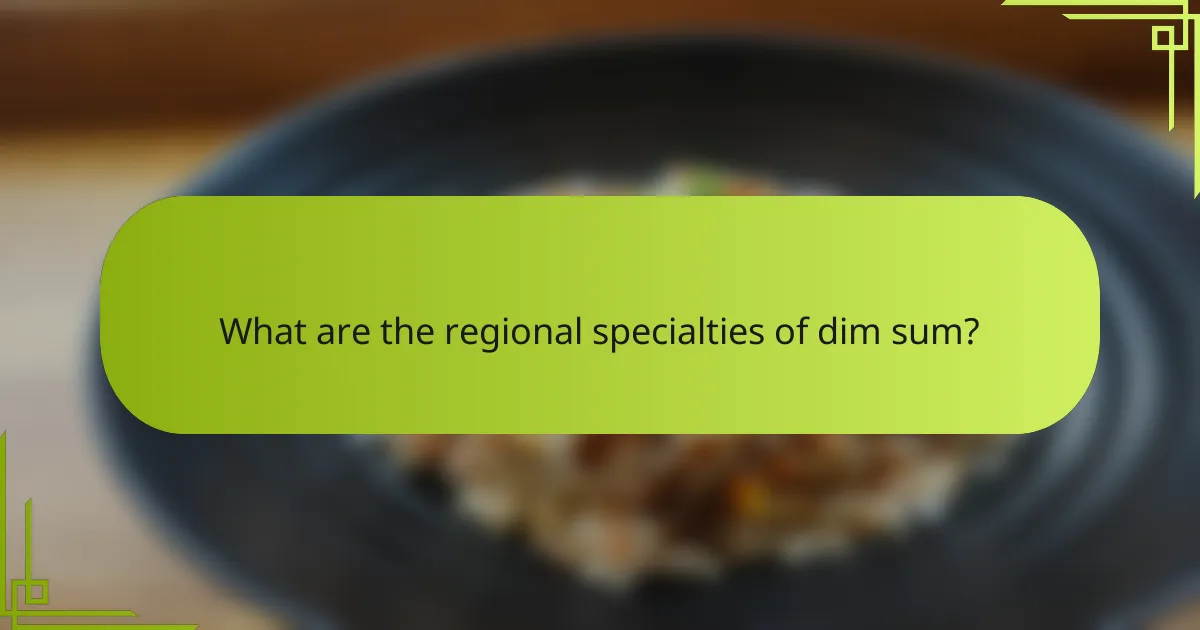
What are the regional specialties of dim sum?
Regional specialties of dim sum vary widely across China, reflecting local ingredients and culinary traditions. Cantonese dim sum is the most recognized, but Teochew and Shanghai styles offer unique dishes that highlight their respective flavors and techniques.
Cantonese dim sum characteristics
Cantonese dim sum is known for its wide variety of small plates, often served in steamer baskets or on small plates. Popular items include dumplings, buns, and pastries, typically enjoyed with tea. The emphasis is on fresh ingredients and delicate flavors, making it a staple in Cantonese cuisine.
Common dishes include har gow (shrimp dumplings), siu mai (pork dumplings), and char siu bao (barbecue pork buns). The experience is often communal, with diners sharing multiple dishes, which encourages a social atmosphere.
Teochew dim sum variations
Teochew dim sum features a distinct focus on seafood and lighter flavors, often incorporating fresh herbs and spices. This style is characterized by its use of rice flour for dumplings, resulting in a translucent appearance. Popular items include Teochew dumplings filled with minced pork and shrimp, and various types of steamed fish.
Teochew cuisine also emphasizes the use of sauces, such as soy or chili, to enhance the natural flavors of the ingredients. The dishes are often less oily compared to other regional dim sum, making them a lighter option.
Shanghai dim sum styles
Shanghai dim sum is known for its hearty and flavorful offerings, with a focus on dumplings that are often filled with rich meats and broths. One of the most famous dishes is xiao long bao, or soup dumplings, which are steamed and filled with a savory broth that bursts when bitten into.
In addition to dumplings, Shanghai dim sum includes a variety of buns and pastries, often featuring sweet or savory fillings. The use of wheat flour is more common in this region, resulting in a different texture compared to the rice flour used in other styles.

What are the essential tools for making dim sum at home?
To make dim sum at home, you need a few essential tools that enhance the cooking process and ensure authentic results. Key items include steamer baskets, rolling pins, and a good set of knives for preparation.
Steamer baskets
Steamer baskets are crucial for cooking dim sum, as they allow for even steaming of dumplings and buns. Bamboo steamers are traditional and preferred for their ability to absorb moisture, preventing sogginess, while metal steamers are durable and easy to clean.
When using steamer baskets, ensure they fit snugly in your pot or wok. You can line the baskets with parchment paper or cabbage leaves to prevent sticking. Typically, a two-tiered steamer allows you to cook multiple items simultaneously, maximizing efficiency.
Common sizes for bamboo steamers range from 20 to 30 centimeters in diameter. For best results, steam over simmering water rather than boiling to maintain a gentle cooking environment. Avoid overcrowding the baskets to ensure proper steam circulation.






